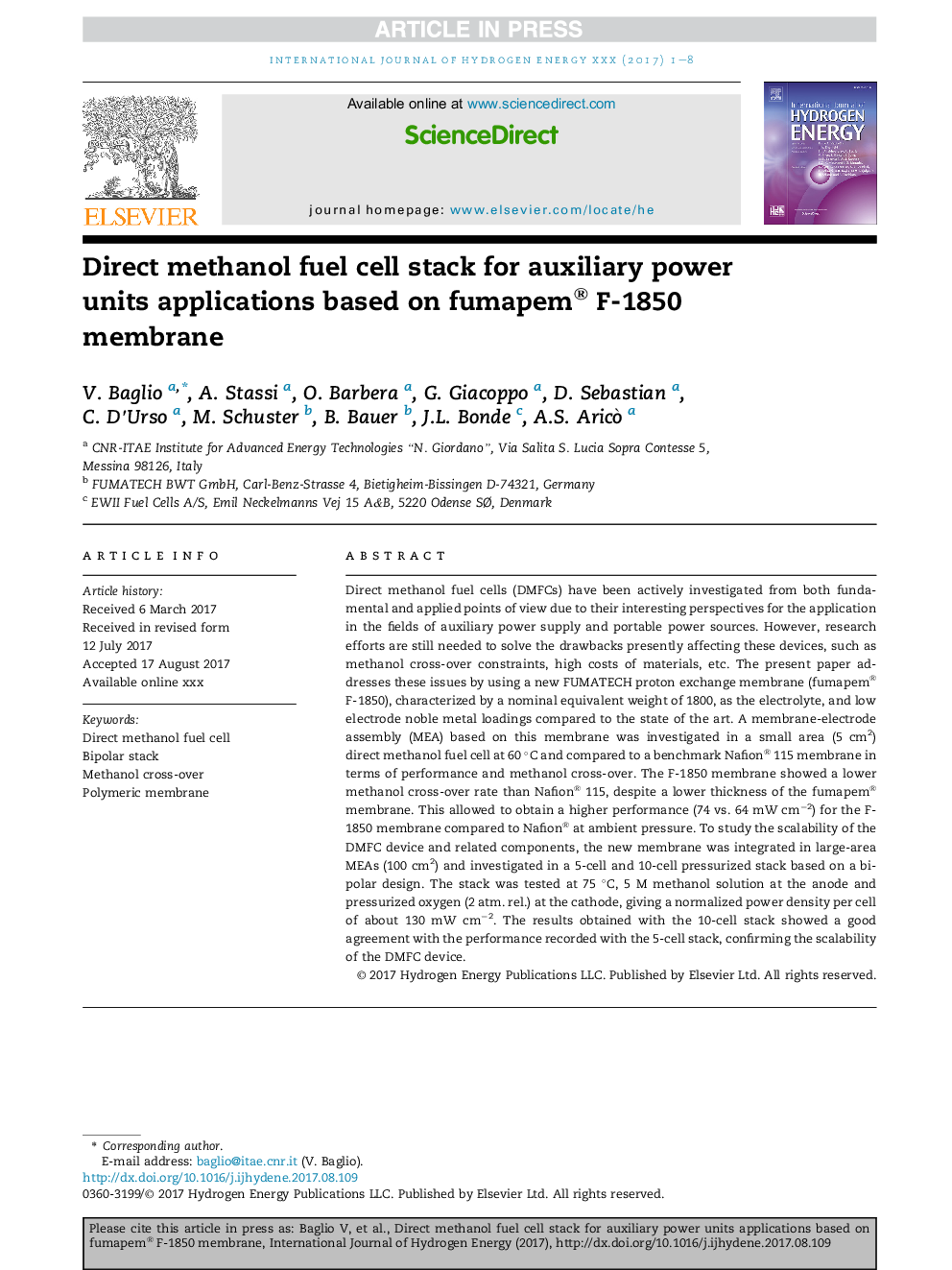| Article ID | Journal | Published Year | Pages | File Type |
|---|---|---|---|---|
| 7709812 | International Journal of Hydrogen Energy | 2017 | 8 Pages |
Abstract
Direct methanol fuel cells (DMFCs) have been actively investigated from both fundamental and applied points of view due to their interesting perspectives for the application in the fields of auxiliary power supply and portable power sources. However, research efforts are still needed to solve the drawbacks presently affecting these devices, such as methanol cross-over constraints, high costs of materials, etc. The present paper addresses these issues by using a new FUMATECH proton exchange membrane (fumapem® F-1850), characterized by a nominal equivalent weight of 1800, as the electrolyte, and low electrode noble metal loadings compared to the state of the art. A membrane-electrode assembly (MEA) based on this membrane was investigated in a small area (5 cm2) direct methanol fuel cell at 60 °C and compared to a benchmark Nafion® 115 membrane in terms of performance and methanol cross-over. The F-1850 membrane showed a lower methanol cross-over rate than Nafion® 115, despite a lower thickness of the fumapem® membrane. This allowed to obtain a higher performance (74 vs. 64 mW cmâ2) for the F-1850 membrane compared to Nafion® at ambient pressure. To study the scalability of the DMFC device and related components, the new membrane was integrated in large-area MEAs (100 cm2) and investigated in a 5-cell and 10-cell pressurized stack based on a bipolar design. The stack was tested at 75 °C, 5 M methanol solution at the anode and pressurized oxygen (2 atm. rel.) at the cathode, giving a normalized power density per cell of about 130 mW cmâ2. The results obtained with the 10-cell stack showed a good agreement with the performance recorded with the 5-cell stack, confirming the scalability of the DMFC device.
Related Topics
Physical Sciences and Engineering
Chemistry
Electrochemistry
Authors
V. Baglio, A. Stassi, O. Barbera, G. Giacoppo, D. Sebastian, C. D'Urso, M. Schuster, B. Bauer, J.L. Bonde, A.S. Aricò,
